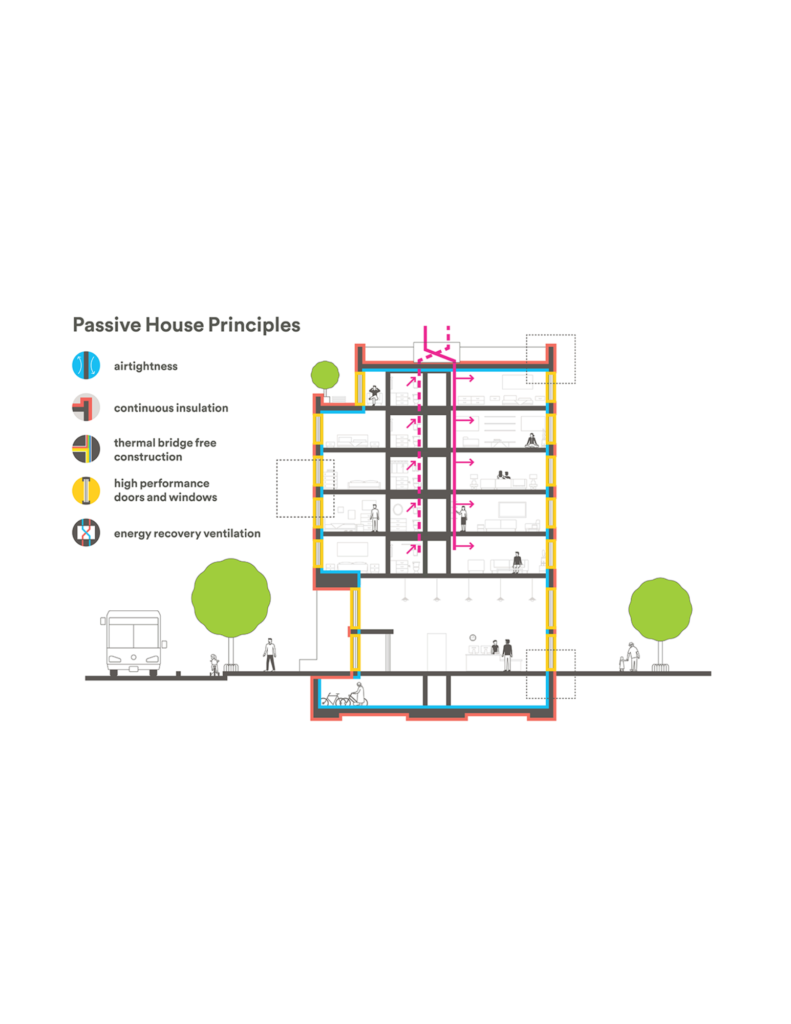A new catch phrase has cropped up in the real estate industry: Passive House Design. It’s definitely hitting the new home construction industry as the most modern architectural design theory with promises of providing more energy efficiency to homeowners. Many tech innovations transfer from consumer to commercial spaces. But, how readily does Passive House Design translate to offices and retail properties? And, will it?
What Is Passive House Design?
The standard for Passive House Design was introduced by Dr. Wolfgang Heist where he laid the groundwork for creating highly energy-efficient buildings. Dr. Heist outlined five basic principles for energy efficiency in buildings: thermal insulation, highly efficient windows, ventilation with heat recovery, air tightness, and a design that is free of thermal bridges. But what does this mean in actuality? All these principles focus on improved methods of temperature control and overall efficiency while also working to reduce a dwelling’s carbon footprint and greenhouse gas emissions. Passive Houses typically use 40-60% less energy than standard buildings, leading to noticeable cost reductions. However, the benefits of Passive House design span beyond just energy efficiency and more comfortable room temperatures.
What are the Benefits of Passive House Design?
Passive House Design creates an airtight envelope as the building shell with superinsulation to increase a home’s energy efficiency as well as eliminate the extra energy consumption created by thermal bridges. In most buildings, the largest source of energy consumption comes from the HVAC system, but in Passive House Design, the system regulates the indoor environment at an optimal temperature with minimal use of the HVAC system.
There is also an important focus on maintaining significantly better indoor air quality (IAQ) because of the heavy focus on ventilation and air tightness. With the use of energy recovery ventilation, buildings maintain comfortable temperatures and humidity levels all year round. This leads to long-term cost savings due to energy efficiency as well as more compact mechanical systems that allow for better design flexibility. Even though there is a greater upfront cost with implementing Passive House Design standards, the energy savings in operational costs throughout the life of the building will end up making it a more cost-effective option in the long run.
Will Passive House Design transition to Passive Commercial Design?
The propensity for Passive House Design to become a standard for commercial buildings is dependent on both a willingness to invest during the construction phase and demand from the public. As people become more accustomed to this in their home design, they will begin to expect it in the workplace where they spend the majority of their days. Regardless of this standard’s potential crossover from residential to commercial spaces, people are increasing their awareness of IAQ and it’s effects on their health and indoor air monitoring continues to grow in demand.
Monitoring indoor air quality is important in commercial buildings to ensure the safety of the individuals occupying the space. qlair specializes in monitoring indoor air quality to ensure pathogen transmission rates among other things like VOC levels are low. Cost savings with qlair monitoring systems come from the same areas of Passive Houses because qlair ensures that you are not overworking your HVAC system. Excess energy consumption can occur when your HVAC system works harder because the filter is blocked up with dirt and dust. Changing your filters too often will also lead to higher operational costs. qlair monitors these systems and alerts you to the perfect times to change your filters which in turn leads to monetary savings in the long run.
Learn more about potential savings from improving HVAC ventilation and IAQ to reduce carbon footprint and energy consumption by speaking with a qlair expert today.

